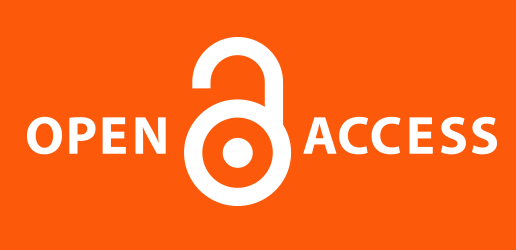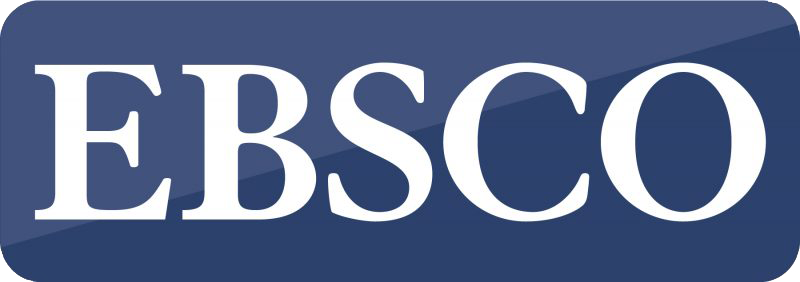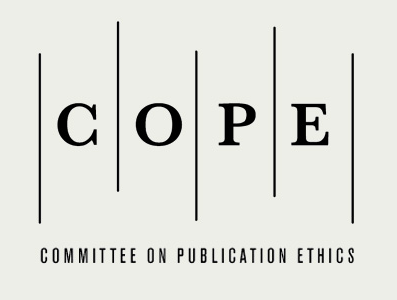Породица као чинилац подршке ликовно даровитој деци из перспективе студената уметничког факултета
Кристинка И. Селаковић, Универзитет у Крагујевцу, Педагошки факултет, Ужице, Србија, имејл: selakovick@gmail.com
Милош М. Ђорђевић, Универзитет у Крагујевцу, Факултет педагошких наука, Јагодина, Србија
Јована Н. Ђорђевић, Универзитет у Крагујевцу, Факултет педагошких наука, Јагодина, Србија
Иновације у настави, XXXVIII, 2025/2, стр. 68–82
| PDF | | Extended summary PDF |
DOI: 10.5937/inovacije2502068S
Резиме: У раду се разматра улога породице која у сложеном и динамичном процесу формирања личности детета има велики значај у стварању подстицајног окружења и пружања адекватне подршке за развој даровитости. Од родитеља се очекује да код свог детета препозна и подржи даровитост, што често представља сложен и изазован задатак. Циљ истраживања био је да се испита искуство студената у вези са тим на који начин је породица подстицала њихову ликовну даровитост и подржала одлуку да упишу уметнички факултет. Намера је била и да се установе облици подршке у односу на образовни статус родитеља. Упитник који је конструисан за потребе овог истраживања конципиран је тако да, поред питања о родитељској подршци, обухвати мишљење студената и у вези са сарадњом и међусобном усмереношћу између породице и школе. У истраживању су учествовали студенти четврте године основних академских студија Факултета примењених уметности Универзитета уметности у Београду (N=103). Резултати су показали да је већина испитаника добила родитељску подршку приликом доношења одлуке о упису на уметнички факултет, при чему је она имала значајнију улогу у односу на утицај школе и наставника на развој њихове ликовне даровитости. Такође, емпиријски налази указују на присуство различитих видова породичних подстицаја, подршке и стимулације из домена ликовне уметности и потврђују значај који породица има за развој потенцијално даровите деце у области ликовне уметности. У односу на образовни статус родитеља није установљена статистички значајна разлика између степена образовања и врсте подршке, осим у заједничком посећивању музеја, галерија, изложби и одлажења на путовања са истим разлогом. Уједно, истраживање отвара питање поспешивања сарадње и партнерства између родитеља и школе ради давања подршке ликовно даровитој деци у даљем развоју њихових потенцијала.
Кључне речи: ликовна даровитост, породица, облици подршке, студенти Факултета примењених уметности, школа.
Summary: The paper discusses the role of the family which, in the complex and dynamic process of forming a child’s personality, is of great importance for creating a stimulating environment and providing adequate support for the development of giftedness. Parents are expected to recognise and support giftedness in their child, which is often a complex and challenging task. The aim of the research was to examine the experience of students regarding the way in which the family encouraged their artistic talent and supported the decision to enroll at an art faculty. Our intention was also to identify the forms of support in relation to the educational status of the parents. The questionnaire designed for the purposes of this research was structured to include, apart from the questions about parental support, students’ opinions regarding cooperation and mutual orientation between the family and the school. The research was conducted with the participation of the fourth-year undergraduate students of the Faculty of Applied Arts, University of Arts in Belgrade (N=103). The results showed that the majority of the respondents received parental support when making a decision to enroll at an art faculty, and that this played a more significant role than the influence of the school and teachers on the development of their artistic talent. In addition, empirical findings indicate the presence of various types of family incentives, support, and stimulation in the field of fine arts and confirm the importance of family for the development of potentially gifted children in the field of fine arts. Regarding the educational status of parents, no statistically significant difference was found between the level of education and the type of support, except for the joint visits to museums, galleries, exhibitions, and trips for the same reason. At the same time, the research raises the issue of promoting cooperation and partnership between parents and schools in providing support to artistically gifted children in the further development of their potential.
Кeywords: art giftedness, family, forms of support, students of the Faculty of Applied Arts, school
Литература:
- Albert, R. S., & Runko, M. A. (1986). The Achievement of Eminence: a model based on a longitudinal study of exceptionally gifted boys and their families. In R. J. Sternberg, & J. E. Davidson (Eds.). Conceptions of giftedness (pp. 332–357). Cambridge University Press.
- Bodroški Spariosu, B., i Duhanaj, N. (2024). Roditeljska uključenost u dečje obrazovanje: koncept i modeli. Inovacije u nastavi, 37(1), 1–15. https://doi.org/10.5937/inovacije2401001B
- Clark, G., & Zimmerman, E. (1995). You Can’t Just Scribble: Art Talent Development. The Educational Forum, 59(4), 400–408. https://doi:10.1080/00131729509335072
- Clark, G. (1989). Screening and Identifying Students Talented in the Visual Arts: Clark’s Drawing Abilities Test. Gifted Child Quarterly, 33(3), 98–105. https://doi.org/10.1177/001698628903300301
- Csikszentmihalyi, M. (2013). Creativity: Flow and the Psychology of Discovery and Invention. Harper Perennial.
- Cvetković-Lay, J. (2002). Darovito je, što ću sa sobom. Alinea.
- Čudina-Obradović, M. (1991). Nadarenost – razumijevanje, prepoznavanje, razvijanje. Školska knjiga.
- Đorđević, J., Đorđević, M., i Arsenijević, M. (2023). Likovna kolonija kao model pedagoške podrške darovitoj deci predškolskog uzrasta. Uzdanica, 20(2), 197–209. https://doi.org/10.46793/Uzdanica20.2.197DJ
- Efland, A. D. (2002). Art and Cognition – Integrating the Visual Arts in the Curriculum. Teachers College, Columbia University Pres.
- Filipović, S. (2014). Likovna pedagogija – aktuelna pitanja, dileme i perspektive – Zvanični obrazovni standardi u oblasti likovne kulture za kraj obaveznog obrazovanja – kako prevazići nedostatke. Kultura, 142, 243–261. https://doi.org/10.5937/kultura1442243f
- Fox, J. E., & Schirrmacher, R. (1998). Art and creative development of young children (3rd ed.). Delmar Publishers.
- Freeman, J. (2000). Families: the essential context for gifts and talents. In K. A. Heller, F. J. Mönks, R. J. Sternberg, & R. Subotnik (Eds.). International handbook of giftedness and talent (pp. 573–587). Elsevier science.
- Gagné, F. (2004). Transforming gifts into talents: The DMGT as a developmental theory. High Ability Studies, 15(2), 119‒147.
- Gardner, H. (2011). Frames of mind: The theory of multiple intelligences. Basic Books.
- George, D. (2005): Obrazovanje darovitih: kako identificirati i obrazovati darovite i talentirane učenike. Educa.
- Hadži-Jovančić, N. (2010). Uloga nastave umetnosti u svetlu savremenih tendencija u opštem obrazovanju. Inovacije u nastavi, 23(4), 14–22.
- Hadži-Jovančić, N. (2012). Umetnost u opštem obrazovanju: Funkcije i pristupi nastavi. Učiteljski fakultet – Klett.
- Harrison, C. (2004). Giftedness in Early Childhood. Roeper Review, 26(2), 78–84. https://doi.org/10.1080/02783190409554246
- Huzjak, M. (2006). Darovitost, talent i kreativnost u odgojnom procesu. Odgojne znanosti, 8(1), 289–300.
- ICOM definition of a museum (2022). ICOM (International Commission of Museums) (n.d.). https://icom.museum/en/resources/standards-guidelines/museum-definition/
- Joksimović, A. (2008). Nastavni predmet iz oblasti vizuelnih umetnosti u obaveznom školovanju – uporedna analiza. Pedagogija, 63(4), 605–618.
- Joksimović, A. (2016). Obrazovanje i umetnost: izazovi nastave likovne kulture. Fakultet likovnih umetnosti – Šprint.
- Korać, I. (2008). Položaj i funkcija Likovne kulture u odnosu na druge nastavne predmete u osnovnoj školi. U: Z. Milinković (ur.). Zbornik Metodički egzemplari (str. 14–51). ULUS.
- Landau, E., & Weissler, K. (1993). Parental environment in families with gifted and nongifted children. Journal of Psychology, 127(2), 129–142.
- Liessmann, K. P. (2008). Teorija neobrazovanosti. Zablude društva znanja. Naklada Jesenski – Turk.
- Maksić, S., i Mirkov, S. (2007). Saradnja škole i porodice u podsticanju talenata i kreativnosti mladih. U N. Polovina, i B. Bogunović (ur.). Saradnja škole i porodice (str. 209–222). Institut za pedagoška istraživanja.
- Manko, A. (2023). Muzej kao resurs učenja i podučavanja u visokoškolskoj nastavi. DHS, 2(23), 639–654.
- Olszewski-Kubilius, P. (2018). The Role of the Family in Talent Development. In S. I. Pfeiffer (Ed.). Handbook of Giftedness in Children (2nd Edition) (pp. 53–71). Springer.
- Pavlović, M., i Sarvanović, A. (2022). Pandemijski izazovi za nastavu likovne kulture u mlađim razredima osnovnih škola u Republici Srbiji. Inovacije u nastavi, 35(2), 89–101. https://doi.org/10.5937/inovacije2202089P
- Pekić, J., Kodžopeljić, Ј., i Genc, А. (2013). Uloga porodice u razvoju darovitosti – porodična podrška/stimulacija i porodična kohezivnost/adaptabilnost. Godišnjak Filozofskog fakulteta u Novom Sadu, 32(2), 111–127.
- Renzulli, J. S. (1978). What Makes Giftedness? Reexamining a Definition. Phi Delta Kappan, 60(3), 180–184.
- Renzulli, J. S. (1999). What Is This Thing Called Giftedness, and How Do We Develop It? A Twenty-Five Year Perspective. Journal for the Education of the Gifted, 23(1), 3‒54. https://doi.org/10.1177/016235329902300102
- Sekulić-Majurec, A. (1995). Darovita djeca i obitelj: Istine i zablude. Društvena istraživanja: časopis za opća društvena pitanja, 4(4–5(18–19)), 551–561.
- Škorc, B. (2012). Kreativnost u interakciji: psihologija stvaralaštva. MOST ART – Zemun.
- Visoko obrazovanje 2021/2022 (2022). Republički zavod za statistiku, Republika Srbija. https://publikacije.stat.gov.rs/G2022/Pdf/G20226012.pdf
- Visoko obrazovanje 2022/2023 (2023). Republički zavod za statistiku, Republika Srbija. https://publikacije.stat.gov.rs/G2023/Pdf/G20236008.pdf
- Winner, E., & Martino, G. (2002). Artistic Giftedness. In N. Colangelo, & G. A. Davis (Eds.). Handbook of Gifted Education (3rd edition) (pp. 335–349). BAllyn & Bacon.
- Winner, E. (2005). Darovita djeca: Mitovi i stvarnosti. Lekenik-Ostvarenje d.o.o.
- Wright, D. (2020). Engaging Young Children and Families in Gallery Education at Tate Liverpool. International Journal of Art & Design Education, 39(4), 739–753. https://doi.org/10.1111/jade.12322
- Zakon o osnovnom obrazovanju i vaspitanju (2013). Službeni glasnik RS, br. 55/2013, 101/2017, 10/2019, 27/2018 – dr. zakon, 129/2021 i 92/2023.
Copyright © 2025 by the publisher Faculty of Education, University of Belgrade, SERBIA. This is an open access article distributed under the terms of the Creative Commons Attribution License (CC BY 4.0) (https://creativecommons.org/licenses/by/4.0/), which permits unrestricted use, distribution, and reproduction in any medium, provided the original paper is accurately cited.





